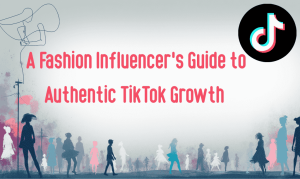
4 Ways Fashion-based Business Benefit from Recycling Their Materials
In today’s fashion-conscious world, fashion is no longer just about making people look good but also doing good, including for the environment. More and more fashion-oriented companies are embracing recycling, not only to assist in reducing their environmental footprint but to gain a competitive edge.
From cost savings to loyalty, the benefits go beyond going green. Recycling materials is not just the right thing to do but the smartest thing to do, which can result in innovation and more customer engagement.
Whether you run a boutique brand or are a large retailer, this shift can transform your future and make you a better business. Here are four powerful ways recycling materials can elevate your fashion business.
Build a Brand That Customers Trust
People, including fashionistas, are now more enlightened than ever before. They are not just buying garments—they are buying value while improving their lifestyle. When you recycle at your fashion house, you’re making a bold declaration that you actually care about your clients and the environment at large. This openness sends a serious kind of trust, and clients will start flocking to your business.
Trust is built from loyalty, and loyalty generates more return business and referrals. As a business, you can seek fast and reliable recycling to help bring sustainable practices into play that are in harmony with your brand image and will resonate with your audience. In this competitive marketplace, being green helps you build your brand, not just a box waiting for approval.
Save Money Without Being Out of Style
Let’s face it—fashion is a very expensive business. From purchasing raw materials to shipping finished products, the costs can add up very fast, leaving you with only a few coins as profits. Recycling materials allows businesses to cut back on these expenses by giving old materials a new life. Instead of purchasing new textiles, several companies are finding value by recycling old clothes, excess materials, and even what they use for packaging.
This move reduces the cost of goods sold and invites innovative product lines that are completely different from the rest of the market. Furthermore, customers love hearing their favorite brands get creative. Going green not only means cutting back on style—it also means getting smarter and saving more money.
Stay Ahead of the Regulatory Curve
Sustainability regulations in the fashion industry are getting tougher across most countries. Governments are implementing legislation that requires businesses to reduce textile waste, promote ethical sourcing, and decrease their environmental footprint. When you embrace recycling in your company today, you’re doing the right thing and safeguarding your company’s future. Compliance enables you to avoid fines in the future and makes you an innovative company in the field.
As a bonus, being an early adopter allows you to frame the ongoing discussion rather than respond to it. Regulations aren’t merely there to punish you—they create a chance to demonstrate to your customers and competitors that you’re ahead of the pack and ready for whatever is coming next.
Fuel Innovation and Creative Design
Recycled materials end up opening an entirely new world of design possibilities. Fashion brands collaborating with recycled materials will have new textures, hues, and patterns that inspire new lines. It pushes designers to be innovative and create products that are beautiful and significant to the modern world.
These unique products will always have a story to share—about where the materials came from, how they were recycled, and why this truly matters. This tale then forms a part of the product’s value, making it good while feeling it’s one-of-a-kind. Sustainability-driven creativity is much welcome in these times when the world is filled with mass-made fashion.

4 Ways Fashion-based Business Benefit from Recycling Their Materials
Fashion recycling is not just a trend but a smart, forward-looking move that repays your business in ways better than you could ever hope. The impact is palpable and permanent, varying from cost-effectiveness and conformity to credibility and creativity. Your consumers always lurk in the background and want to shop with companies that think something is more valuable than what they are offering in exchange. By making your business more sustainable, you’re being better and leading the pack in a competitive market.

fashionabc is a fashion technology platform, comprising a digital directory and various other digital tools and supply chain solutions for the fashion industry ecosystem, that focus on ethical fashion and sustainability. We are building inclusive digital transformation tools for fashion professionals who are willing to take steps towards a more sustainable ethical fashion industry, by adopting AI and DLT blockchain technology.
* building digital profile and IP solutions for fashion businesses
* tackle issues such as provenance and counterfeit in supply chain
* contribute to the construction of a meritocratic ethical fashion industry which is certified and part of the circular economy










